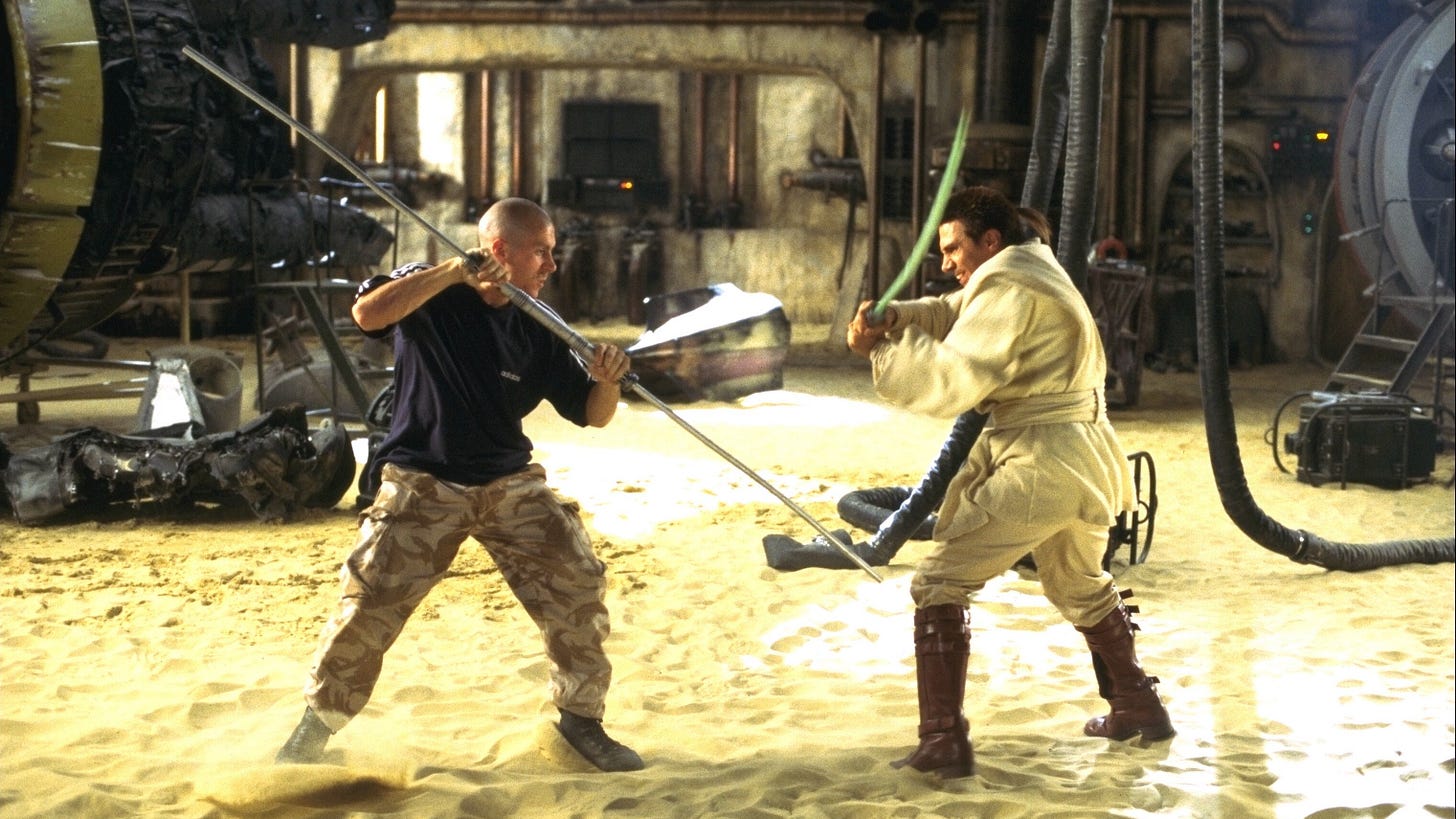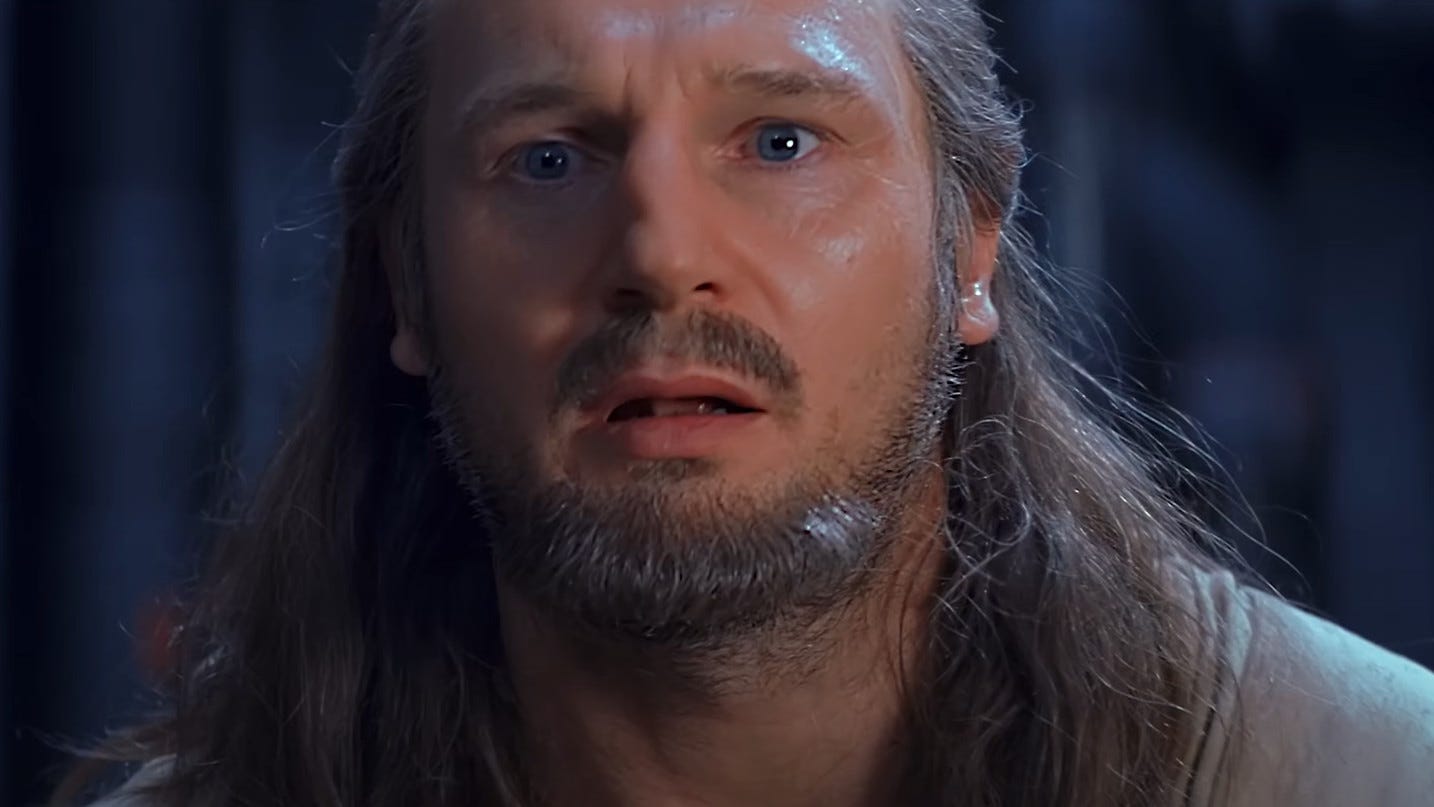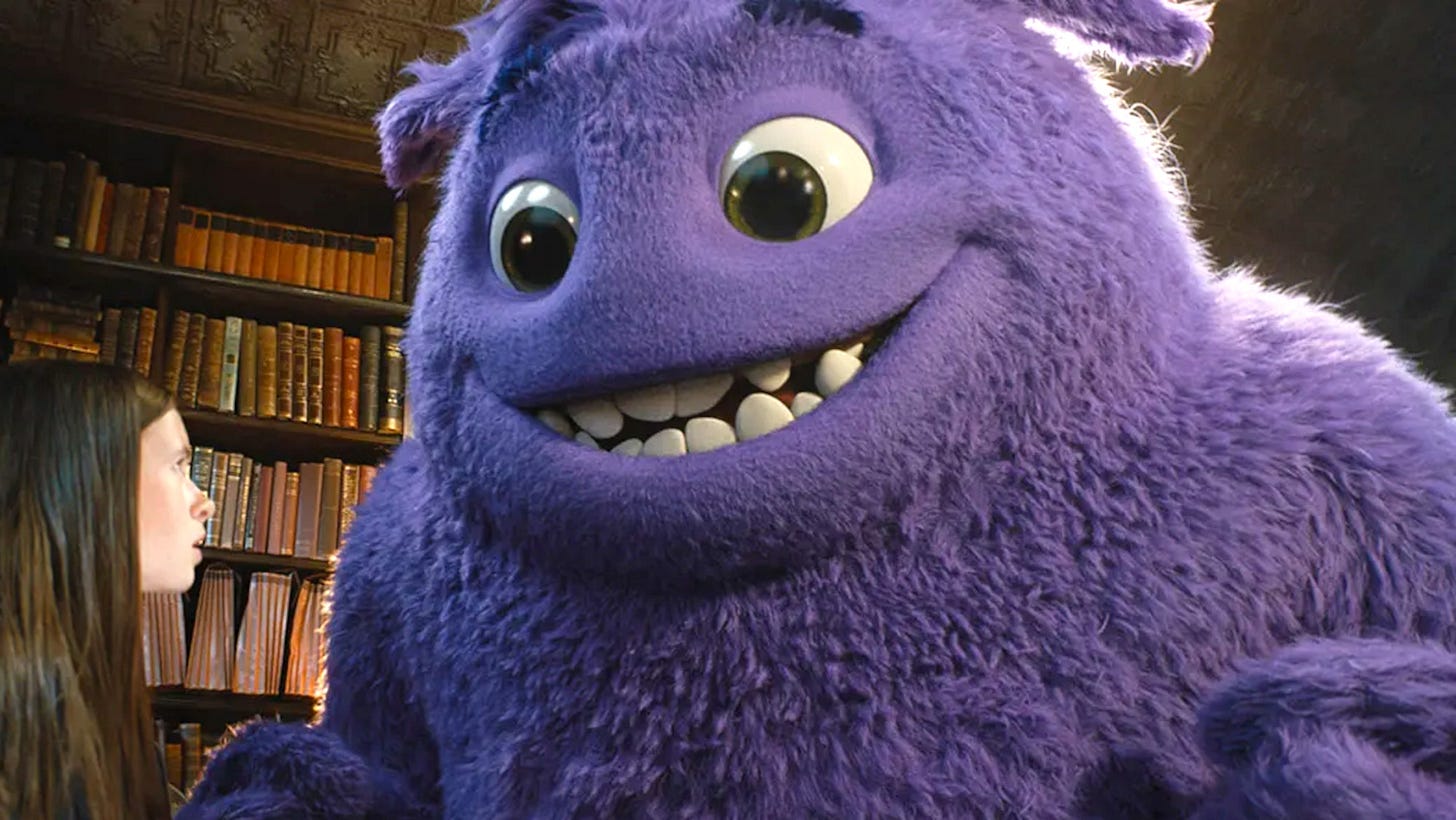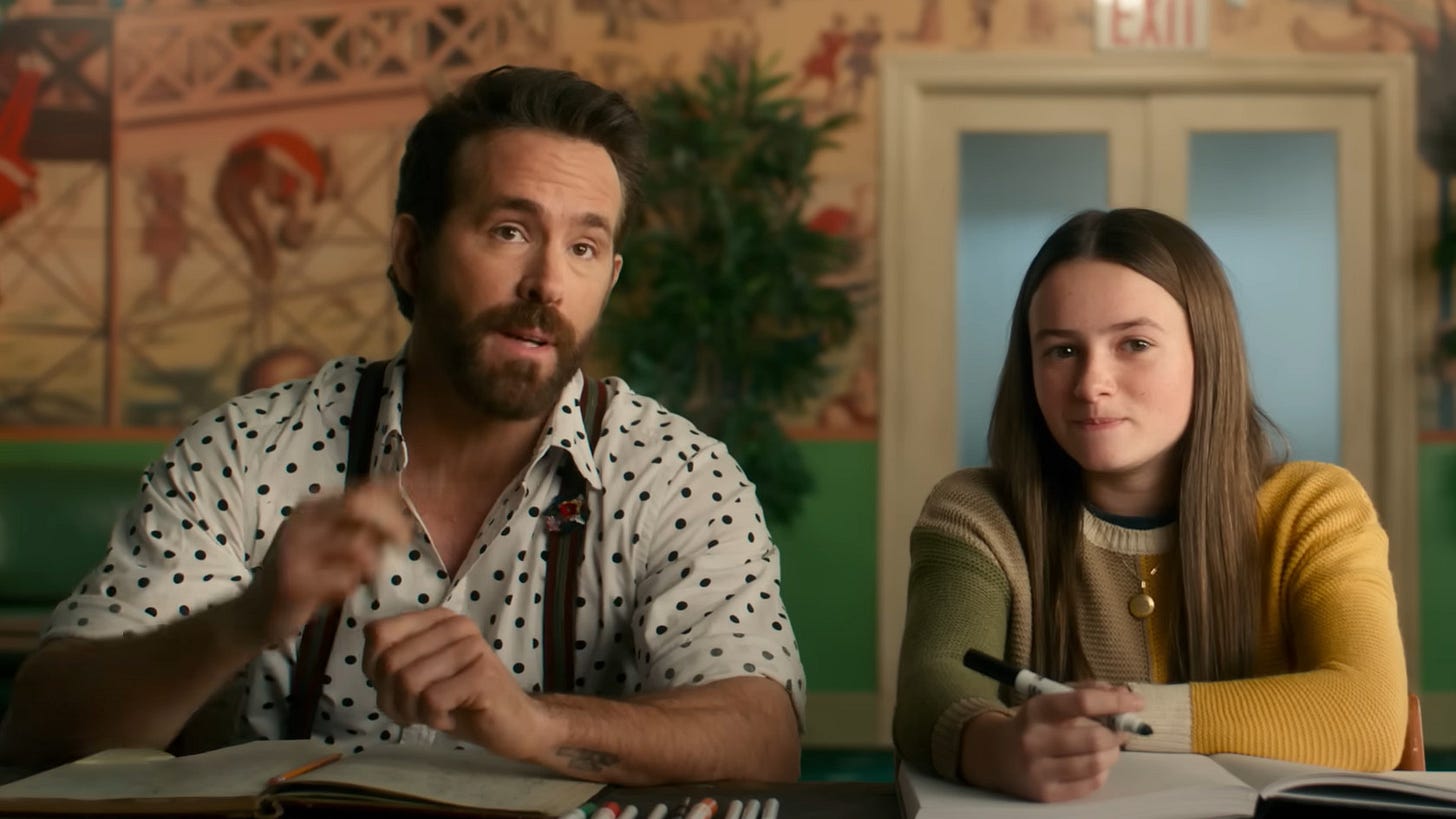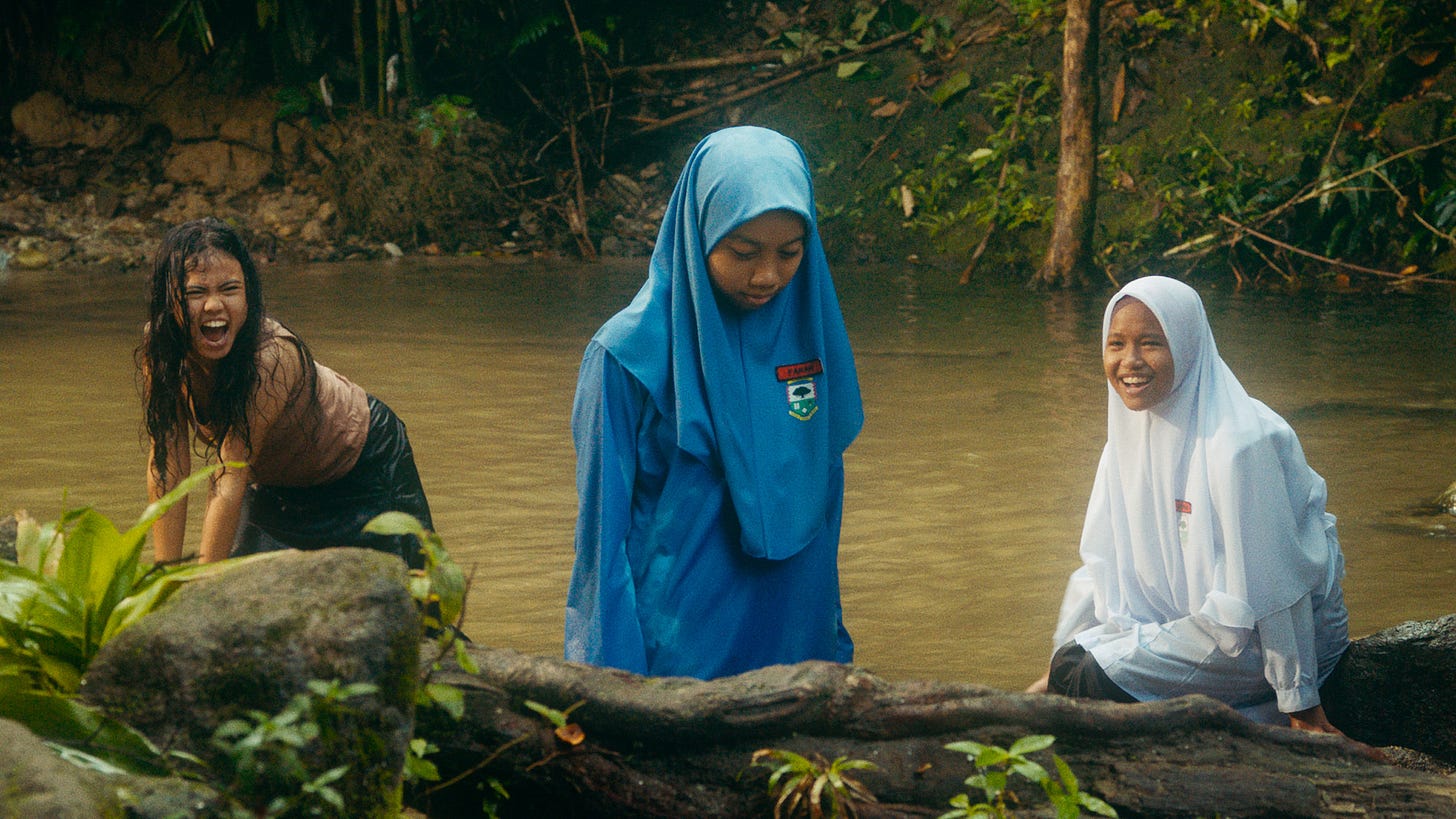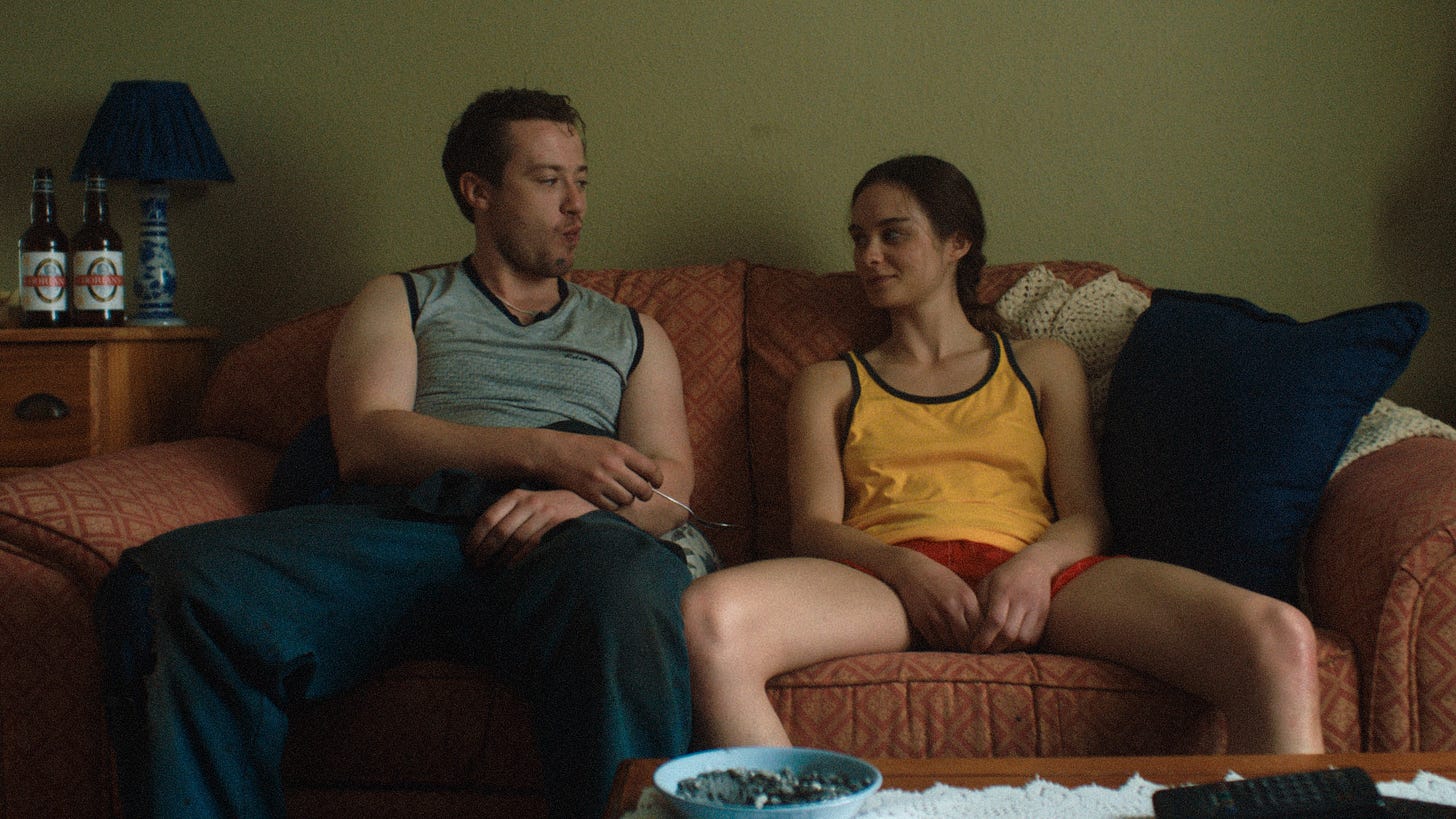Phantom Menace is the best Star Wars movie in one specific way
There's at least one way in which the much-maligned prequel is the top of the Star Wars tree. I'm also reviewing family comedy IF and Malaysian body horror Tiger Stripes.
All the usual film reviews coming in an eclectic week at the UK multiplex. But first, let’s dive into a hot take to mark the 25th anniversary of Star Wars: The Phantom Menace. Bear with me on this one…
Duel of the Fates is still the best lightsaber fight in Star Wars history
I assume we all had the same reaction when Disney announced its 25th anniversary re-release of Star Wars: The Phantom Menace? Yippee! A quarter of a century after George Lucas made a generation of 70s children drag their own kids to watch a two-hour epic about intergalactic taxation and trade blockades, the film is back in cinemas. And seeing as we’re doing a bit of prequel rehabilitation both inside and outside of the on-screen universe — Dave Filoni is working really hard — let’s talk about the one way in which The Phantom Menace is streets ahead of everything else. It contains the greatest lightsaber battle in Star Wars history.
There are three distinct eras of lightsaber combat in the live-action Star Wars universe. First, the choreographically cumbersome but character-packed battles of the original trilogy, then the CGI-enhanced ultra-speed chaos of the prequels, followed by the more raw and untrained scuffles of the sequel franchise. All three of these periods have their benefits and drawbacks, with great fights present in each era.
The climactic battle of Phantom of the Menace, though, is special. Referred to by almost everybody as Duel of the Fates after the legitimately iconic John Williams track that accompanies it, it’s five minutes of pure drama — if you glue together all of its parts — through the medium of grown men in dressing gowns swinging colourful swords at each other. While huge swathes of The Phantom Menace have dated horribly, this sequence remains absolutely beautiful.
The reason Duel of the Fates stands out so strongly is because it’s a perfect midpoint between the first two eras of combat we discussed earlier. It’s as rammed with character and heft as any duel from the original series, but it doesn’t push into the level of silliness we saw from the truly ludicrous fight scenes in Attack of the Clones and Revenge of the Sith. Those looked more like light shows and impressive gymnastic showcases than duels to the death.
Duel of the Fates is hugely sophisticated from a technical perspective, as you can see if you watch the excellent behind-the-scenes documentary. Stunt coordinator Nick Gillard taught Ewan McGregor and Liam Neeson how to do as much of the fighting as possible, with help from Darth Maul actor Ray Park — a martial artist with a gymnastics background. This was all in service of what George Lucas wanted from his new series, as he explained in that documentary:
“I was looking for a kind of sword fighting that was reminiscent of what was in the movies that we'd already done, but a more energised version of it. We'd actually never seen real Jedis at work. We'd only seen old men and crippled half-droid, half-men and young boys that had learned from these people. So to see a Jedi fighting in the prime of the Jedi, I wanted it to be a much more energetic and faster version of what we'd been doing.”
Duel of the Fates certainly meets that brief, upping the ante in terms of speed and mixing together as many different swordplay styles as possible. But there’s no wasted motion thanks to the meticulous choreography, described by Gillard as being akin to a game of chess in which “every single move is a check, there’s only one way out of it”.
More important than the behind-the-scenes artistry through is how the fight feels on screen. And it feels wonderful. Every blow does seem like it’s a potential kill-shot and the introduction of other elements — manipulating objects with the Force, physical blows with the arms or legs — is done sparingly and when merited. This is a battle for supremacy between devotees of the lightsaber as what the older Obi-Wan Kenobi would later call “an elegant weapon for a more civilised age”. When Maul throws an elbow or a kick, it feels like the dirty trick of a pro wrestling bad guy and it throws our heroes into peril.
The ebb and flow of the action is expertly managed too, moving between environments and finding elegant reasons for the three-way fight to become one-on-one as often as possible, making Maul’s continued survival against two Jedi knights believable. Character is established very quickly. Maul is an elite swordsman willing to take shortcuts. Qui-Gon is a veteran devotee of the Jedi arts who can hold his own. Obi-Wan is the hyper-aggressive youngster keen to prove himself.
This all comes to a head in the laser gate segment, in which the three fighters are temporarily separated by impenetrable forcefields. Maul immediately paces behind his own door like a caged tiger and Kenobi waits anxiously from a distance, while Qui-Gon falls to his knees and quietly meditates. In amongst the swinging blades of light, this moment alone tells us everything we need to know.
When the gates open, Kenobi still can’t get close enough to prevent Maul besting Qui-Gon. But as Gillard explained to Vulture in 2017, even that final blow illuminates the character’s villainy as much as his fighting prowess. Maul feints towards the head in order to open up Qui-Gon for the deadly stab to the body. As Gillard explains: “If you had two top swordsmen, they probably wouldn’t use a feint because it’s a little bit on the dark side.” This Sith apprentice fights well, but he fights without honour.
After Qui-Gon falls, those gates give us a beat to catch our breath as Maul and Kenobi face each other down. When we cut back to the fight, McGregor then gets his moment to shine, flying at Maul with rage and grief in his heart. He’s a scruffier and less refined fighter than Qui-Gon, but it’s a slick moment of Force trickery that gives him the opening to slash Maul in half.
We’ve had great saber fights before and since Duel of the Fates. In fact, Maul has been involved in many of them during his tenure on Filoni’s animated shows. Honourable mention too for the throne room sequence in The Last Jedi. But none of them marry intricate choreography, perfect pacing, and potent character detail like this one.
The Phantom Menace has myriad flaws and it won’t trouble anyone’s list of the best Star Wars movies. The rehabilitation talk is probably a bit too much. But when it comes to lightsaber combat? Oh, it’s absolutely flawless.
The Phantom Menace is still in some UK cinemas and is available to stream on Disney+.
Turns out it’s the fun that’s imaginary
If you’ve made two of the most acclaimed horror movies of the 21st century, what do you do next? Well, if you’re John Krasinski, you veer off into the other direction and try your hand at wholesome family comedy. His new movie IF will have a very different audience to A Quiet Place but, if I’m honest, my cinema experience tells me they’ll be greeted the same — with stony silence.
The premise is a promising one, with youngster Bea (Cailey Fleming) unwittingly discovering that imaginary friends are actually real and find themselves at a loss when the children who invent them grow up. Bea’s eccentric neighbour Cal (Ryan Reynolds) has devoted his life to helping orphaned IFs match with new kids in need of a lift from a surreal companion, so Bea joins his little enterprise to take her mind off her dad’s (Krasinski) upcoming heart surgery.
The stakes of this whole IF business are a little fuzzy though. Forgotten IFs seem to live in a pretty luxurious fancy retirement home and, although there’s some vague references to them disappearing, it’s not clear whether they go the way of Inside Out’s Bing Bong or simply crave interaction like the toys of Toy Story. They seem to be living in utter comfort.
But the biggest problem with IF is that it simply isn’t very funny. The overwhelming feeling is of a movie drenched in treacle and schmaltz, assisted by Michael Giacchino doing a karaoke version of his own previous scores. Krasinski’s script is an onslaught of platitudes, like it was written by an AI model fed exclusively with fortune cookies and horoscopes.
There are colourful characters aplenty, rendered with very impressive CGI and voiced by a who’s-who of Hollywood stars — including George Clooney, Awkwafina, and Blake Lively. But none of these critters, despite the imagination that went into their creation, can ever raise a smile beyond tired slapstick.
The biggest victim of this is Ryan Reynolds. It’s fair to say that he has developed a certain post-Deadpool persona of late — world-weary cynicism and know-it-all snark — that has some people more than a little fatigued. At times, Cal feels like a self-conscious spin away from that. That’s fine on the face of it, but becomes a problem when it’s replaced by… nothing. This is Reynolds feeling curiously neutered and wandering around the story as if desperately in search of his own charisma.
But it’s not the most irritating performance. That has to go to Krasinski himself, who hops through a selection of exhausting scenes as a sort of manic pixie dream daddy ballroom dancing with his IV drip. In fairness to Bea, his nonsense would be enough to send me retreating into a fantasy world even without the fears about his health.
There’s just a complete absence of anything in IF. It tugs at our heartstrings in the most perfunctory way with a derivative emotional arc that desperately reaches for profundity only to fall hopelessly short. And it doesn’t even work as a knockabout family comedy packed with silly animated characters because none of those characters make even a modicum of impact.
Everyone involved here is trying really hard, but that just makes the failure even sadder. Any fun to be had here is completely… well, imaginary.
IF is in UK cinemas now.
This tiger definitely has teeth
“I don’t want to be the first,” says Zafreen Zairizal’s protagonist in a particularly heart-breaking moment of the visceral coming-of-age horror Tiger Stripes. She’s experiencing the one thing a tween girl never wants — to be singled out as different and unusual. It’s a relatable fear and, remarkably, this pink-hued rebel yell of a movie keeps it relatable even when it introduces the idea of a were-tiger. That’s talent.
Malaysian filmmaker Amanda Nell Eu won an award at the Cannes Film Festival for this debut feature, which tells the story of Zaffan (Zairizal) as she becomes the first pupil at her strict Muslim school to start her period. She’s soon branded “gross” and a “slut” by her former friends, including secret mean girl Farah (Deena Ezral). But the changes continue beyond what human beings have been told to expect.
Female-led horror of the coming-of-age variety is common, of course, and there’s plenty of Ginger Snaps and Raw in the way Tiger Stripes uses supernatural elements as a metaphor for society’s attitude to the natural changes of womanhood. Eu even includes scenes of ambiguous hysteria that appear to nod to Carol Morley’s beguiling 2014 thriller The Falling.
But there’s a vicious, playful feel to Tiger Stripes that means it deserves a place among those other classics of the genre. Zairizal clearly relishes the increasingly grotesque elements of brutality and transformation, but never loses sight of the fact her character is fundamentally a scared little girl being ostracised by those closest to her as a result of something she cannot control.
We know that patriarchal society is terrified of young girls and the prospect of their independence, so this is nicely illuminated through the way Zaffan is treated. The best moment comes with the arrival of a social media obsessed exorcist (Shaheizy Sam) hoping to use Zaffan to boost his own stardom, only to end up at the heart of a blackly comic sequence that’s as joyous as it is terrifying.
This is a rough-around-the-edges movie with some ropey effects and a reluctance to really push the concept to its horrific limits, but it’s also a deliciously anarchic calling card for a director who we’ll all be watching soar to even greater heights in the coming decades.
Tiger Stripes is in UK cinemas now. Find a screening here.
Hoard is full of piss and vinegar
Most of us live in fear of bin juice. In fact, we spend a lot of time trying to make sure we never come into contact with it. But in the movie Hoard, it’s something to be embraced and comforted by. British filmmaker Luna Carmoon blasts on to the scene with this weird, meandering drama that finds a lot to say through its most shocking moments. The bin juice is merely the tip of the unsanitary iceberg.
The opening act of the movie follows youngster Maria (Lily-Beau Leach) through a grimy life with her very loving mother (Hayley Squires). They live in a house packed floor-to-ceiling with detritus and tat the duo has scavenged from bins and the streets. So much so that there’s a sort of ecosystem of mice and other assorted critters living there. After a terrible accident, we flash forward a decade to a teenage Maria (Saura Lightfoot-Leon) forming a sort-of-romance with her sort-of-foster-brother Michael (Joseph Quinn).
Easy answers are hard to come by in this transgressive drama, which delights in constantly wrong-footing its audience. Quinn and Lightfoot-Leon give tremendously bold, physical performances that show outright commitment and provide enough energy to keep the story moving, even as Carmoon’s script occasionally spins its narrative wheels during the over-extended two-hour runtime.
The performances are the engine at the heart of a movie that frequently turns the stomach while posing potent questions about the effects of grief and the stigma around alternative parenting. Carmoon — whose post-credit scene hints at a subtle element of autofiction — nails the unique purgatory of the first summer after school ends, allowing her story to unfold at a time when emotions are high but consequences are low. It’s the fertile ground for this story to bloom into a putrid, rotten flower.
Hoard is a challenge on many levels and it’s as frequently infuriating as it is fascinating, casting an opaque layer over its deeply messed up characters. But this is uncompromising filmmaking that signals a director with plenty to say and all of the tools to say it.
Hoard is in UK cinemas now. Find a screening here.
Trailer of the Week: House of the Dragon
Never being a massive Lord of the Rings fan, my allegiances in the great fantasy show battle of 2022 were very much with Game of Thrones prequel House of the Dragon. I loved its snakey politics, building tension, and Paddy Considine’s powerhouse performance. And now, as we move into the second season, it’s all-out war… with enormous, marauding fire-breathers. Inject it into my veins right now!
House of the Dragon season 2 starts in the UK on 17th June.
Next week: We’re back to the wasteland with Furiosa and eating lasagne with Garfield. What a joyous double bill!





